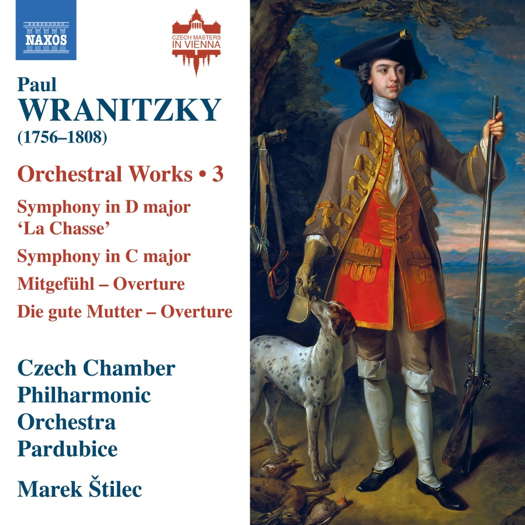 VIDEO PODCAST: John Dante Prevedini leads a discussion about The Creative Spark, including contributions from Ryan Ash, Sean Neukom, Adrian Rumson, Stephen Francis Vasta, David Arditti, Halida Dinova and Andrew Arceci.
VIDEO PODCAST: John Dante Prevedini leads a discussion about The Creative Spark, including contributions from Ryan Ash, Sean Neukom, Adrian Rumson, Stephen Francis Vasta, David Arditti, Halida Dinova and Andrew Arceci.
 RESOUNDING ECHOES: Beginning in 2022, Robert McCarney's occasional series features little-known twentieth century classical composers.
RESOUNDING ECHOES: Beginning in 2022, Robert McCarney's occasional series features little-known twentieth century classical composers.
 DISCUSSION: What is a work? John Dante Prevedini leads a discussion about The performing artist as co-creator, including contributions from Halida Dinova, Yekaterina Lebedeva, Béla Hartmann, David Arditti and Stephen Francis Vasta.
DISCUSSION: What is a work? John Dante Prevedini leads a discussion about The performing artist as co-creator, including contributions from Halida Dinova, Yekaterina Lebedeva, Béla Hartmann, David Arditti and Stephen Francis Vasta.

Truly Interesting and Well-crafted
GERALD FENECH listens to more orchestral music by Paul Wranitzky
'... vividly refreshing yet technically demanding music, warmly performed and recorded.'
Born in the same year as Mozart in the southern Moravian village of Neureisch, Paul Wranitzky (1756-1808) was one of the most renowned composers of his day. Indeed, he was the most important symphonist in Vienna at the turn of the eighteenth century. In 1783 he became music director of Count Johann Baptist Esterhazy of Galantha, and upon the court's recommendation Wranitzky joined the Viennese Masonic Lodge for which he composed songs as well as symphonies. In 1785, Wranitzky and Mozart became masonic brothers when three lodges merged. In that same year the composer became orchestra director at the Karntnerortheatre and two years later at the Burgtheatre. From 1790 until his death he would hold the directorship of both court theatres. He was extremely respected by his fellow composers, and both Haydn and Beethoven invited him to conduct their works. In fact, both 'The Creation' and the First Symphony respectively, were conducted by Wranitzky. Beethoven's work was the premiere of the piece. After his sudden death in 1808 his musical legacy was quickly overshadowed by that of his colleagues and friends, particularly Mozart, Haydn and Beethoven. Only in recent years has his music again begun to garner the attention it clearly deserves.
This Naxos cycle focusing on his orchestral works is invaluable to the cause, and this volume 3 includes some truly interesting and well-crafted compositions. The Symphony in D, Op 25 'La Chasse' (1793) opens with an 'Allegro' brimming with optimism and anticipation. A stately Menuetto and its rustic Trio are placed second. The Adagio is an idyllic serenade in compound tenary form featuring woodwind solos in the expanded repeats. A contrasting stern middle section followed by a return to the pastoral mood conclude this movement. Hunting horns set the mood for the 'La Caccia' finale. The excitement is palpable as the music chases towards the jubilant ending full of varied orchestral textures.
Listen — Paul Wranitzky: Allegro 'La Caccia' (Symphony in D, Op 25)
(track 5, 4:54-5:46) ℗ 2021 Naxos Rights (Europe) Ltd :
The opera Die gute Mutter was premiered in Vienna on 11 May 1795. This two-act stage-work is set in the Austrian countryside and revolves around the widow Rosalia (The Good Mother), who helps her daughter Marianne to marry the one who really loves her. The light-hearted Overture makes use of country-dance themes which are heard in both the opening and ending of the work.
Listen — Paul Wranitzky: Die gute Mutter Overture
(track 6, 0:00-0:41) ℗ 2021 Naxos Rights (Europe) Ltd :
The Symphony in C, Op 33 No 2, was published in 1798 and was dedicated to Baron Peter von Braun, manager of the Viennese court theatre. Sometimes existing symphonies were reused for the stage and vice-versa. This symphony is an example of the latter. The opening Allegro maestoso is in articulated sonata form, enhanced by broad musical gestures, running scales and unison passages. The tranquil Adagio is permeated by some lovely tunes with muted strings and interweaving wind solos. The exquisite Menuetto, definitely not intended for dancing, frames a more relaxed Trio, while the Finale opens with a rustic slow introduction which leads to a bouncy Allegro cast in sonata form. Masterfully scored and irresistibly catchy, it illustrates the care Wranitzky took in composing his symphonic finales.
Listen — Paul Wranitzky: Andante - Allegro (Symphony in C, Op 33 No 2) (track 10, 0:51-1:50) ℗ 2021 Naxos Rights (Europe) Ltd :
Mitgefühl (Compassion) is a one-act 'Liederspiel' which was premiered in Vienna on 21 April 1804 and repeated again the following day. But that is how far it got in the composer's lifetime. The story centres on two young lovers, Niklas and Marie, and two very different fathers. Marie's is kind and generous. Niklas' is heartless and greedy. Through the good deeds of the former, the latter is taught to feel compassion for others. The lengthy overture is full of attractive tunes, but is mainly based on the final chorus. Indeed, this seven-note motif is put to extensive and sometimes surprising use throughout this expansive sonata-form work, and makes a fitting opening to the programme.
Listen — Paul Wranitzky: Mitgefühl Overture
(track 1, 7:22-8:19) ℗ 2021 Naxos Rights (Europe) Ltd :
This is vividly refreshing yet technically demanding music, warmly performed and recorded. Hopefully Vol 4 is not far away.
Copyright © 28 October 2021
Gerald Fenech,
Gzira, Malta

CD INFORMATION - PAUL WRANITZKY: ORCHESTRAL WORKS 3


